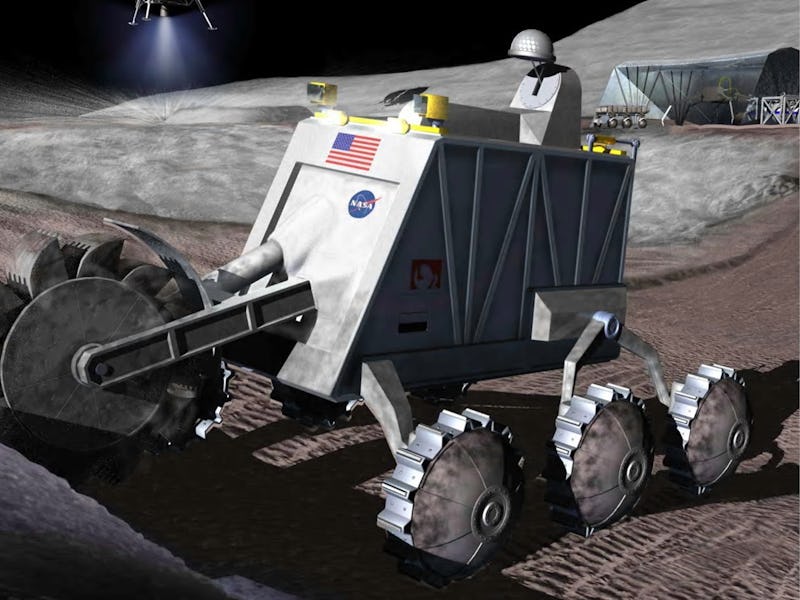NASA Wants to Return to the Moon for This Underground Reason
The agency wants the private sector's help in a possible push to advance space mining.

NASA’s primary objective for the next couple of decades is to send people to Mars but it doesn’t mean the agency is ignoring Earth’s neighboring rocks. This week, NASA issued a “request for information” to the private industry for proposals related to cargo transportation to the lunar surface, as well as a potential mission to collect lunar samples and deliver them back to Earth.
The exact purpose of such an RFI, like most of the agency’s RFIs, remains ambiguous. It’s not clear to what mission NASA would apply such proposals. Nevertheless, it’s a sign NASA seems to be more interested in going back to the moon than it has previously let on, and the key winners would be any parties interested in space mining.
“NASA has identified a variety of exploration, science, and technology demonstration objectives that could be addressed by sending instruments, experiments, or other payloads to the lunar surface,” the RFI reads. “To address these objectives as cost-effectively as possible, NASA may procure payloads and related commercial payload delivery services to the Moon (sic).”
The language seems to emphasize the role of commercial activities. Furthermore, there are references to applying such transportation services to the return of “play lands or samples” to Earth. Mined payloads fall under that umbrella. Space mining is going to be an industry driven largely by the private sector, so it makes perfect sense to have them involved in the design and implementation of transportation architecture that will move large payloads back and forth through cislunar space.
If NASA works with the private sector to advance space mining, it could help make an ESA moon base more sustainable and supportable.
“The eighth continent” could be a haven of valuable resources, like iron and platinum. Creating a plan for ferrying these resources back to Earth is essential to actually turning lunar mining into a profitable activity, and it would lay the groundwork for bigger, more permanent outposts parties like ESA are looking to build.
All of that begs the question: why get NASA involved? The RFI could be a result of Donald Trump’s presidency. The new administration has implicitly and explicitly expressed intentions to pivot American space policy towards bolstering the private industry’s role, as well as returning an American presence to the moon. Having NASA work directly with the private industry to facilitate a lunar payload transportation system basically kills two birds with one stone.